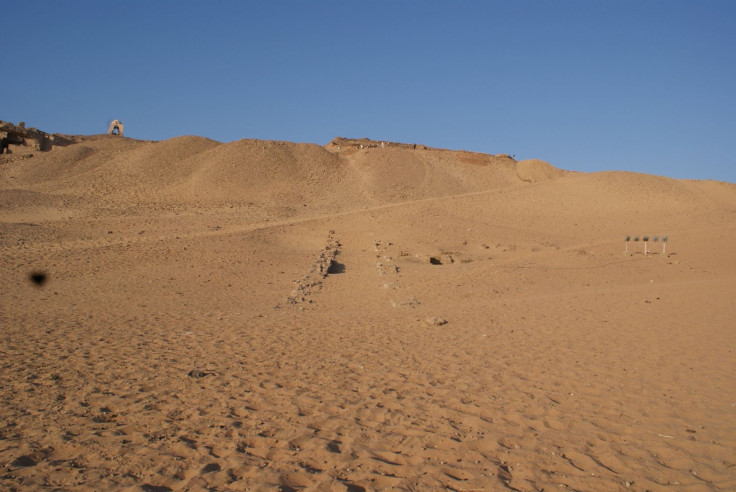Ancient wall unearthed at heart of Egypt's Qubbet el-Hawa cemetery to reveal stunning secret tombs
A joint University of Birmingham-Egypt Exploration Society Research Project has revealed a hidden wall below a visitors' pathway.
Archaeologists working in the elite cemetery of Qubbet el-Hawa, near the Egyptian city of Aswan, have uncovered the remains of an ancient wall hidden beneath a sandy footpath. The first analyses of its structure provide compelling evidence that new graves may soon be discovered in its vicinity.
Qubbet el-Hawa cemetery is a valuable archaeological site, because it contains impressive rock cut tombs of a number of provincial officials of Egypt's Old Kingdom (roughly 2686-2181 BCE) and Middle Kingdom (roughly 2055-1650 BCE). However, it had never been comprehensively excavated and a number of illicit explorations in recent years has also made it all the more urgent to conduct in-depth scientific work to document what remains.
This is why a joint University of Birmingham-Egypt Exploration Society Research Project at Qubbet el-Hawa was launched this year.
The archaeologists' rigorous exploration of the site has led to the discovery of the ancient wall, which up to now had remained hidden below the visitors' pathway in the northern part of the West Aswan cemetery at Qubbet el-Hawa.

Nasr Salama, general director of Aswan and Nubia Antiquities, described the discovery as"stunning" adding that it was now only a matter of time until new tombs were uncovered within the important cemetery.
Read more:
Tutankhamun's secrets, mummies and meteorite dagger – what we learnt about Ancient Egypt in 2016
Pyramids of Egypt reveal new secrets after extensive scanning mission
Oldest papyrus ever found reveals details of Great Giza pyramid's construction
Using pottery remains embedded in the wall, they were able to date it accurately. Some are indeed fragments of bowls created in a style that is typical of the reign of Pepi II, during the Sixth Dynasty (c. 2278-2184 B.C.) of the Old Kingdom. However, other fragments were more clearly associated with the clay jars typical of the First Intermediate Period and the Middle Kingdom. This suggests that there was an expansion of the cemetery over a long period of time.
The team then established that the wall had been built as architectural support for tombs that can be found of the first upper terrace, and that belong to powerful and high-ranking officials of Egypt's Old Kingdom, including two governors of the Elephantine known as Harkhuf and Heqaib.
However, the researchers believe that the wall also helped secure potential lower-lying tombs which would have been accessible by a causeway leading to a second terrace. More research will now be conducted in the hope of finding these lower-lying tombs.
This is not the first time that the University of Birmingham-Egypt Exploration Society Research Project has made the headlines. They recently discovered the long-lost causeway leading to the tomb of Sarenput I, one of the largest and most beautiful tombs of the Middle Kingdom on the hill of Qubbet el-Hawa.
© Copyright IBTimes 2025. All rights reserved.






















